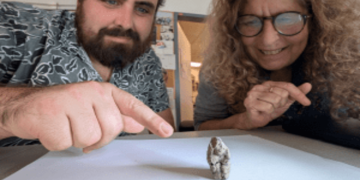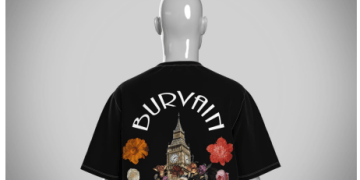NASA has stumbled across a mysterious object while roaming Mars that’s caught the attention of space enthusiasts.
The unlikely piece has been likened to a medieval helmet due to its odd shape.

Others said it looked like the sorting hat from Harry Potter[/caption]

The object was pictured by Nasa’s Perseverance rover[/caption]
It was pictured by the space agency’s Perseverance rover that’s been on the look out for signs of alien life.
“Gandalf’s hat or a pot helmet?” one person remarked on Facebook.
“The Planet of the Sorting Hats has been found!” another said in reference to Harry Potter.
A third joked: “Martian buffalo’s dung — nothing abnormal about it.”
Other guesses included it looking like a “landed weather balloon” or “a relic from an ancient sea that was once on Mars”.
The photo was named as Nasa‘s Image of the Week by public vote and has been a source of discussion since.
However, it’s not some abandoned ancient alien accessory as some may think.
It’s a rock that happens to be shaped like a hat, composed of spherules, tiny particles which are the result of volcanic activity or meteorite impacts.
The shape is likely to be due to processes such as wind erosion, volcanic activity, and mineral precipitation from ancient groundwater.
“This rock’s target name is Horneflya and it’s distinctive less because of its hat shape (which looks to me to be generally consistent with the pyramid shape we often see in of wind-eroded float blocks on the surface of Mars) and more because it’s made almost entirely of spherules,” David Agle, a spokesperson for the Perseverance team revealed to Space.com.
It’s not the first time unexpected objects have been spotted on the Red Planet.
A strange cylinder-like piece previously fuelled speculation with people suggesting it could be an artifact of ancient civilisation on the Red Planet or a chunk of a crashed UFO.
However, it was later believed to be remnants of old spacecraft hardware.
What is on board the Perseverance rover explained

Perseverance is looking for signs of life on Mars.
It boasts a total of 19 cameras and two microphones, and carries seven scientific instruments.
1. Planetary Instrument for X-Ray Lithochemistry (PIXL)
An X-ray “ray gun” that will help scientists investigate the composition of Martian rock.
2. Radar Imager for Mars’ subsurface experiment (RIMFAX)
A ground-penetrating radar that will image buried rocks, meteorites, and even possible underground water sources up to a depth of 10 metres (33ft).
3. Mars Environmental Dynamics Analyzer (MEDA)
A bunch of sensors that will take readings of temperature, wind speed and direction, pressure, and other atmospheric conditions.
4. Mars Oxygen ISRU Experiment (MOXIE)
An experiment that will convert Martian carbon dioxide into oxygen. A scaled-up version could be used in future to provide Martian colonists with breathable air.
5. SuperCam
A suite of instruments for measuring the makeup of rocks and regolith at a distance
6. Mastcam-Z
A camera system capable of taking “3D” images by combining two or more photos into one.
7. Scanning Habitable Environments with Raman and Luminescence for Organics and Chemicals (SHERLOC)
From Baker Street to Mars: Sherloc contains an ultraviolet laser that will investigate Martian rock for organic compounds.




























